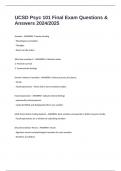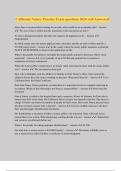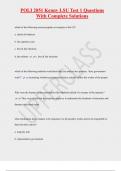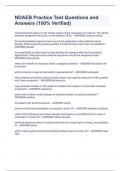Prüfung
UCSD Psyc 101 Final Exam Questions & Answers 2024/2025
- Kurs
- Hochschule
UCSD Psyc 101 Final Exam Questions & Answers 2024/2025 Emotion - ANSWERS- Transient feeling - Physiological correlation - Thoughts - Desire to take action Why have emotions? - ANSWERS1. Motivate action 2. Promote survival 3. Communicate feelings Darwin's theory of emotion - ANSWERS...
[ Mehr anzeigen ]







